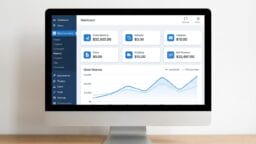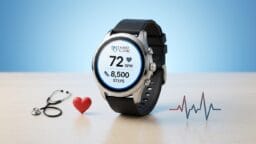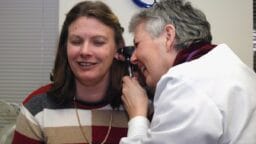[GAME CHANGER]
What if an AI understood your body more intimately than you do? Predictive AI, a South Korean medical startup, has secured $13.8 million in domestic funding, banking on that very prospect. The company is dedicated to creating digital twins of the human genome, essentially virtual replicas encompassing approximately 20,000 genes and three billion DNA sequences.
These digital entities aim to forecast diseases, identify hazardous prescriptions, and even serve as a patient’s surrogate during medical consultations. Yun Sa-jung, CEO and co-founder, articulates a vision that is both straightforward and audacious: assist individuals in maintaining optimal health to attain the age of 100 by ensuring the longevity of each organ’s functionality.
“It’s not about living forever,” Yun asserted in a recent interview with the Korea JoongAng Daily at the media outlet’s office in western Seoul. As an adjunct professor of bioinformatics at Johns Hopkins University, he elaborated, “It’s about guaranteeing that every organ operates efficiently for as long as possible.”
The impetus for this endeavor arose from a personal crisis. Upon his father’s diagnosis with a rare stomach cancer, Yun and his identical twin brother, Yun Si-jung—currently Predictive AI’s Chief Science Officer and a research professor of genomics at Johns Hopkins School of Nursing—came to realize that the malignancy could have been anticipated, and perhaps even averted, through genetic screening.
This realization spurred a four-year commitment to transform the human genome into a digital twin. In 2020, the brothers inaugurated Predictiv Care in Silicon Valley, initially supported by Plug and Play Ventures, with subsequent expansion into the United Arab Emirates through Mubadala Investment Company. More recently, they established a Korean entity, Predictive AI, to penetrate the domestic market.
Currently, the startup is hurrying to validate the practical potential of its platform. By emulating the body at a genetic level, the system is capable of recommending optimal drug combinations for patients, thereby mitigating adverse interactions. It acts as a relentless “medical advocate,” supplying healthcare providers with specific personal health data that patients themselves might overlook.
Moreover, leveraging liquid biopsy—a simple blood draw—it endeavors to identify cancers earlier than traditional methods like colonoscopy, presenting a less invasive and more frequent avenue for preventive care.
Q. What are your flagship products, and how do they assist patients?
We concentrate on two primary solutions. The first is BestMed, a system that assists in aligning patients with suitable medications based on their genetic profiles. Certain drugs are prodrugs requiring activation by specific liver enzymes; however, not all individuals possess the same enzyme variations, leading to potential treatment failures or adverse effects in certain patients.
If a patient ingests a medication that their body cannot metabolize, the result can be ineffectiveness—or far worse, severe side effects. Through the simulation of drug-gene and drug-drug interactions within a genetic digital twin, we can recommend the safest and most efficacious prescriptions tailored to each individual.
The second product is CancerTracer, which employs liquid biopsy to identify circulating fragments of tumor DNA in the bloodstream. Conventional methodologies, such as colonoscopies or protein-based cancer markers, are indeed valuable; yet, they typically diagnose disease only after it has advanced.
In contrast, liquid biopsy offers the potential to detect cancers at an earlier stage, even at minuscule concentrations, in a manner that is far more convenient—requiring merely an additional tube of blood during a routine checkup. Collectively, these instruments aim to furnish individuals with preventive, personalized care that extends lifespan while safeguarding health.
How long does it typically take to replicate a person’s genetic blueprint digitally?
From the moment we obtain a cheek swab or blood sample, sequencing completion takes approximately 60 hours. A buccal swab comprises saliva and epithelial cells; extracting DNA from this material requires roughly eight hours.
Once ready, the sample is placed into the sequencing machine, which necessitates an additional 50 hours to yield the complete genetic sequence.
However, the primary challenge lies not in the speed of sequencing but in the cost structure. Sequencing devices from companies like Illumina or MGI utilize cartridges designed for bulk processing, irrespective of whether it’s a single sample or hundreds.
Consequently, much of the waiting time arises not from the sequencing itself but from storing samples in cold conditions until a sufficient quantity is amassed to conduct a comprehensive batch.
It’s intriguing that you chose to amalgamate pharmacogenomics and liquid biopsy. How did this decision come about?
For us, it felt inherently logical. Once you construct the digital twin, it resembles building Google; diverse applications can be integrated atop it. Pharmacogenomics and liquid biopsy examine disparate facets of the genome.
The former inspects inherited germline mutations to determine how the body metabolizes drugs, while the latter focuses on somatic mutations—transformations that occur over time within cells, such as those propelling cancer. Both rely on DNA, making their combination on a single platform a reasonable progression.
The objective is not to supplant doctors but rather to equip them with precise advocacy for the patient. A digital twin can address inquiries that patients may be unable to answer themselves, such as whether they possess a gene associated with breast cancer.
Moreover, it can perform simulations in real-time: if a cardiologist prescribes one medication and a pulmonologist another, the system can preemptively check for genetic and chemical conflicts before the patient even collects the prescription. Thus, it functions effectively as a medical proxy—optimizing care organ by organ, and drug by drug.
What are your aspirations for Korea, and how do you envision your solutions integrating into the Korean medical system?
Korea represents an immensely attractive market due to its national health screening initiative. Currently, checkups are provided in standardized packages. Nonetheless, medical care does not adhere to a one-size-fits-all approach. By utilizing genetic data, we can transition toward personalized screenings.

For instance, an individual with a genetically elevated risk for Parkinson’s disease may necessitate imaging from a specific angle that standard CT scans do not encompass. Knowing this in advance allows us to customize the checkup, optimizing time and resources while facilitating earlier disease detection.
Naturally, regulatory frameworks here are stricter than in the U.S. In America, direct-to-consumer genetic testing is generally permitted, whereas access in Korea is more constrained due to stringent regulations. Therefore, much of our operations must navigate through hospitals and clinics instead of directly reaching consumers.
Nonetheless, I am confident that our solutions can evolve into a seamless extension of Korea’s healthcare system, transforming routine screenings into genuinely preventive personalized care.
You also possess entities in the United States and the UAE. What are your international strategies?
Each market embodies its own uniqueness. In the U.S., our focus has primarily centered on seniors, many of whom currently manage five or more medications concurrently. Polypharmacy presents a formidable challenge, and BestMed offers a clear remedy by supporting physicians in overseeing drug safety. In the UAE, we gained entry to the Hub71 accelerator with the assistance of the Mubadala Group.
Ultimately, our overarching ambition is global in scope. We aspire to establish a pioneering clinic that embodies our concept of ‘5P medicine’—personalized, preventive, predictive, participatory, and precision care
The premise is that anyone entering such a clinic can have their vital organs meticulously calibrated to restore them to normal ranges, diminishing risk factors before they manifest into ailments. If we can realize this vision, individuals across the globe will have an enhanced opportunity to live healthily to 100.
Source link: Koreajoongangdaily.joins.com.






